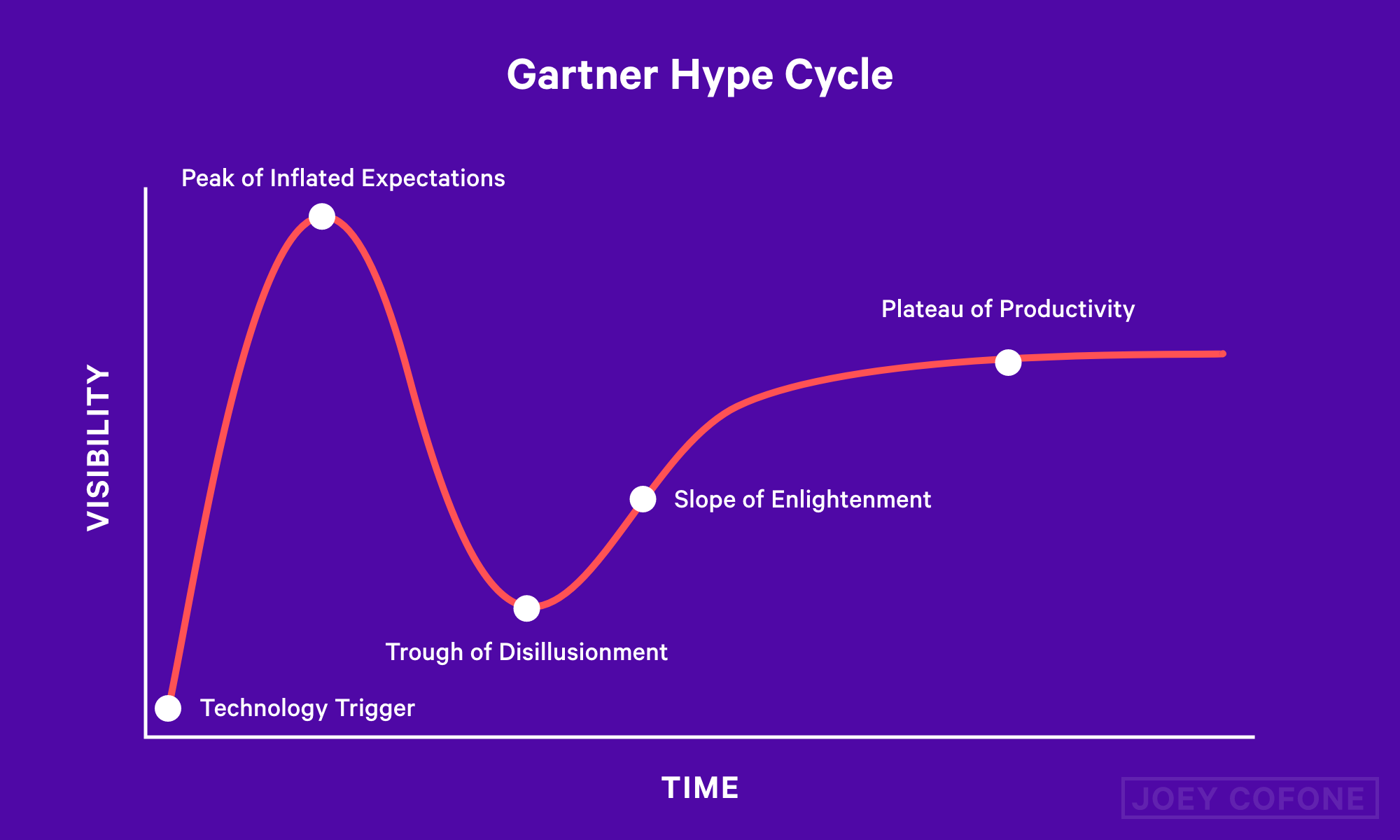Gartner Hype Cycle
QUOTE
Geoffrey Moore once said…
“Innovation demands both enthusiasm and skepticism.”
(American consultant and author.)
CONCEPT
Gartner Hype Cycle
The Gartner Hype Cycle is illustrates the typical progression of a new technology from inception to maturity and widespread adoption.
The cycle is characterized by five key phases:
Technology Trigger, where a technology is conceptualized.
Peak of Inflated Expectations, where initial excitement leads to over-enthusiasm.
Trough of Disillusionment, where interest wanes as experiments and implementations fail.
Slope of Enlightenment, where understanding of how the technology can benefit the market starts to crystallize and second- and third-generation products appear.
Plateau of Productivity, where mainstream adoption starts to take off.
STORY
Tap Tap Tap … Into the Future?
An intriguing historical example that embodies the Gartner Hype Cycle is the development and adoption of the telegraph. This revolutionary technology, which began to take shape in the early 19th century, went through phases of heightened expectations, followed by setbacks, and eventually widespread adoption.
Technology Trigger: The initial development of the telegraph can be traced back to the early 19th century, with multiple inventors across different countries contributing to its evolution. The most significant breakthrough came in 1837 when Samuel Morse and his assistant Alfred Vail developed the Morse code system, which enabled the transmission of complex messages across telegraph lines.
Peak of Inflated Expectations: By the 1840s, after the first successful demonstration of a telegraph line from Washington, D.C., to Baltimore, the potential of the telegraph was met with enormous enthusiasm. Investors rushed to fund new telegraph companies, and there was widespread speculation about its impact on communication, business, and journalism. People believed it would shrink the world more dramatically than any invention since the printing press.
Trough of Disillusionment: However, the initial excitement soon faced realities. Technical limitations, the high cost of building infrastructure (especially undersea cables), and the lack of a universal standard led to failed projects and financial losses. Many early investors saw poor returns as the market was flooded with competing systems and companies.
Slope of Enlightenment: Gradually, through trial and error, more reliable systems were developed, and key figures like Cyrus West Field succeeded in laying the first transatlantic telegraph cable in 1866. Technical improvements continued, and operational costs began to decrease. Businesses started to realize the value of instant communication, particularly for financial and commodity markets.
Plateau of Productivity: By the late 19th century, the telegraph had become an indispensable tool of communication, integral to the operations of governments and businesses. It transformed news dissemination, diplomacy, and financial transactions, effectively making it the world's first Internet.
This journey of the telegraph illustrates the cyclical nature of technological adoption and the eventual integration of innovative systems into the fabric of daily life and global business.
As always, innovation and imagination alternate between supporting one another and being at odds. Next time you see a new piece of technology, get excited—but hold onto your skepticism.
The five phases of the Gartner Hype Cycle.

